| Time stratification |
|
 |
|
| |
This useful tool stratifies a database, by adding one more column to the database being observed.
To use this tool you need at least one date-type field in your database, then you have to choose the type of stratification (yearly, monthly, etc..)
The next example shows a yearly criterion, as you will see:
|
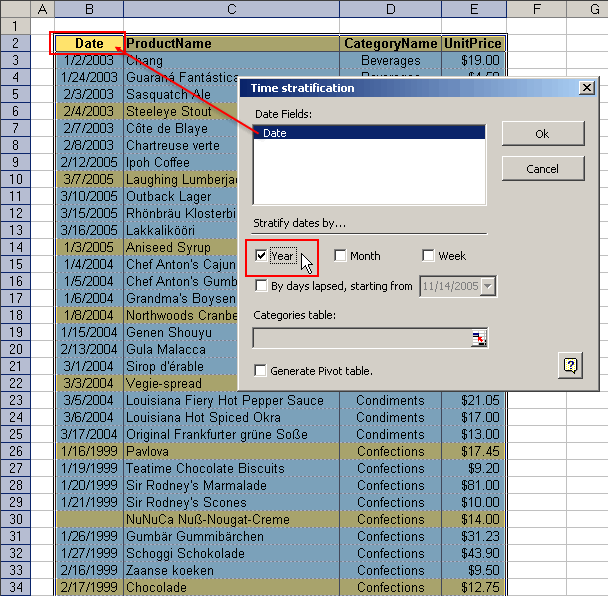
|
| The result is shown below:
|
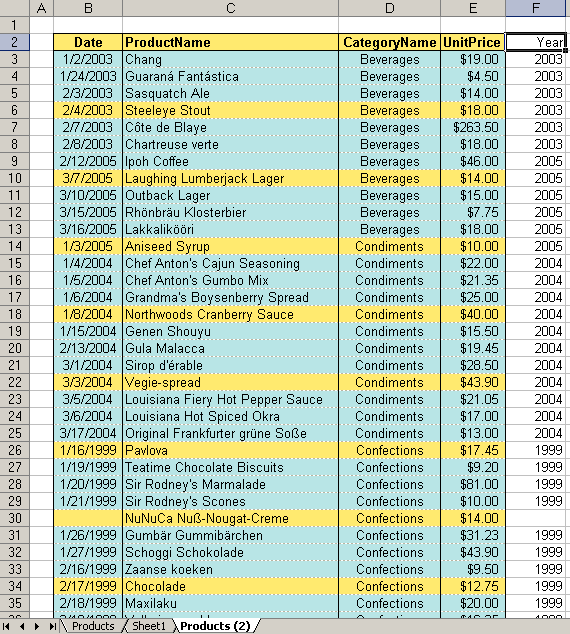
|
If you further want to create a pivot table with the results, you only would have to check the Generate pivot table checkbox.
You will see that the dialog enlarges and will provide us with the option to choose the field you want to analyze and the mathematical operation to be done.
Notice that the Year option has been added, because we chose a yearly stratification.
|
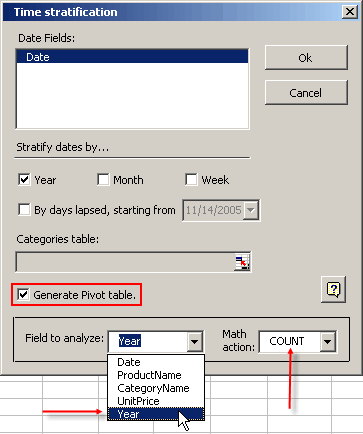
|
Use this tool and you will notice how useful it is.
In addition, this tool has the option of stratifying a table with a more sophysticated criterion:
* By number of days elapsed
This option works as follows:
1. Choose the date-type field to be evaluated
2. Enter the starting date in the dialog.
3. Enter the category table. This is a table containing a number of intervals (in elapsed day) which shall be evaluated and according to it shall be added to the corresponding category in the database.
For example: if the starting date entered in the dialog is 1/9/1999 and the first record to be evaluated is 1/2/2003, the number of days elapsed between those two dates is calculated to be greater than 1000 days, so this record would be allocated to the Hard problem category.
Let's see the example:
|
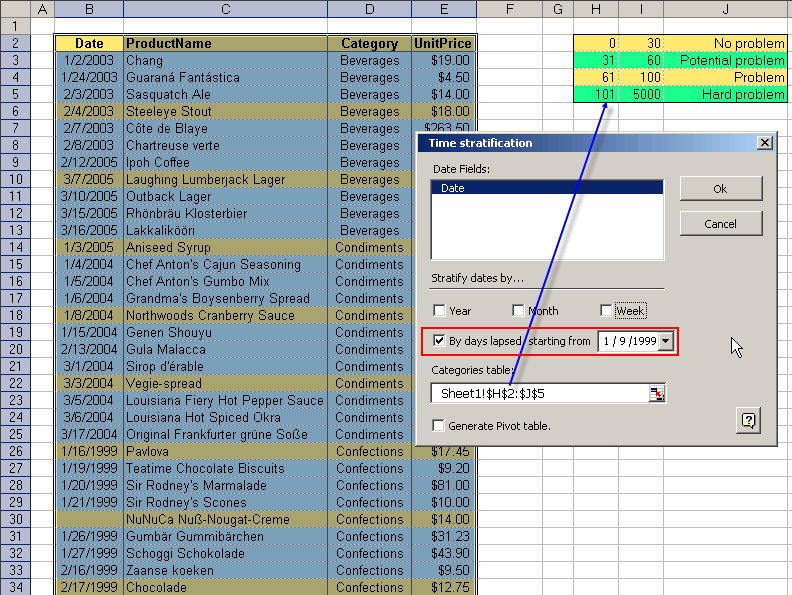
|
The result is the following:
|
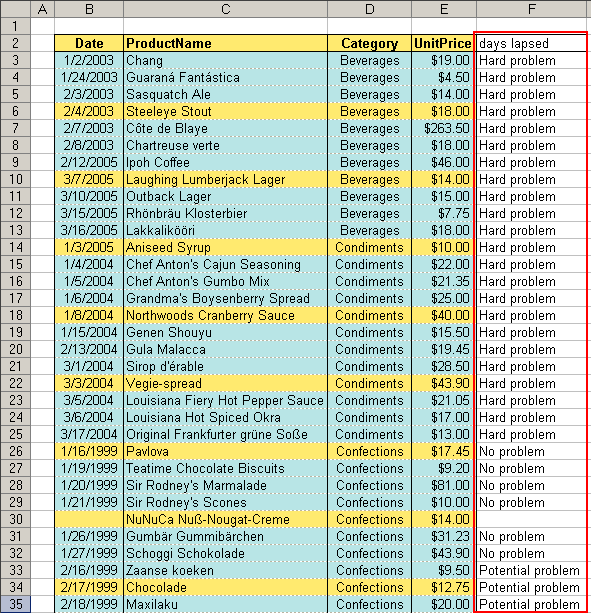
|
| If applicable, the corresponding pivot table would have been created. You may modify the table created by dragging and dropping the appropriate fields. |




